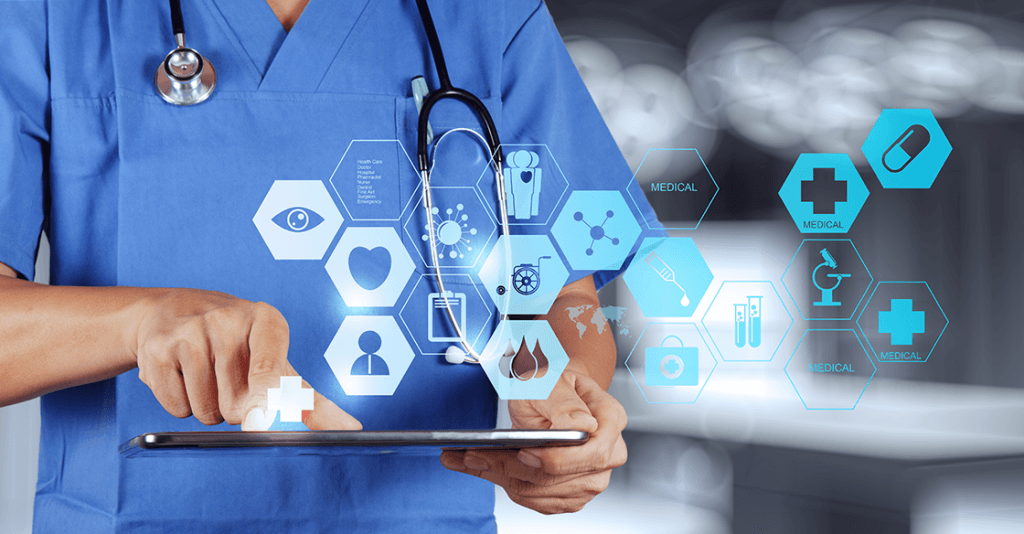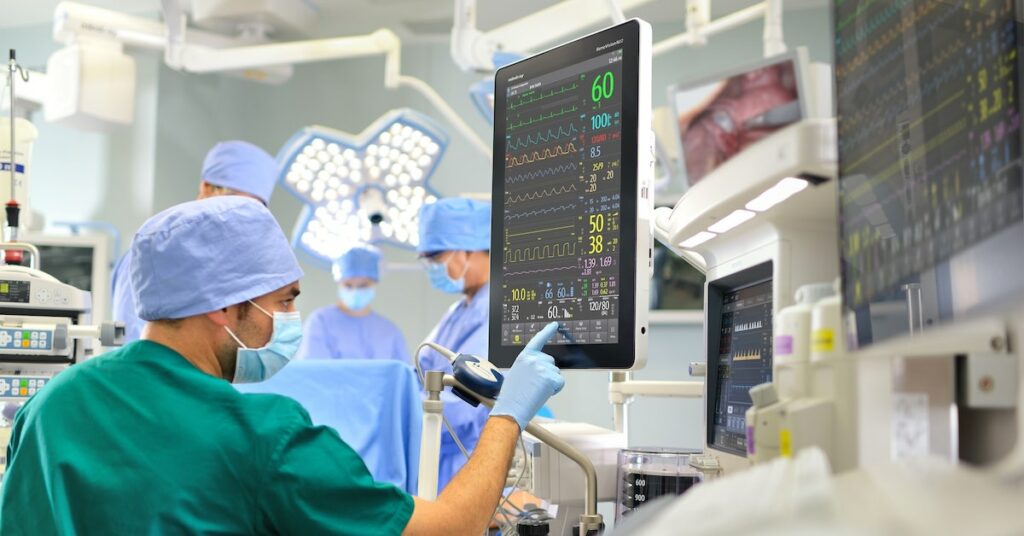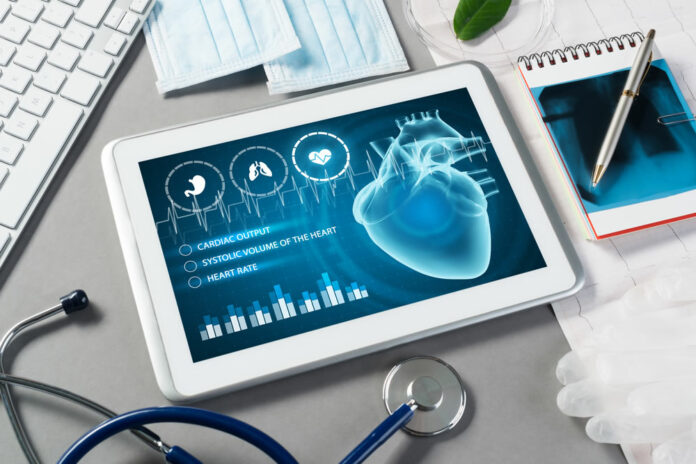In several sectors, including healthcare, the rise of information technology has resulted in various benefits. Health care organizations and businesses are increasingly focusing on IT in the form of healthcare software systems.
Healthcare software applies to knowledge-based, decision-support IT systems that provide help, advice, and reviews in the healthcare environment. A growing number of hospitals are using electronic health record (EHR) healthcare software as their central patient file repository.
Nursing departments also use appointment scheduling software to help monitor and plan shifts. Medical equipment scheduling healthcare software is also used to track patients in the intensive care unit (intensive care units).
What is Medical Software or Healthcare Software and How Does It Work?
Healthcare Software is a general concept that encompasses all applications that assist healthcare organizations in managing their clinical and administrative functions. Billing, appointment scheduling, creating and handling patient reports, picture/image archiving, and administering drugs are only a few of the processes that systems have automated.
What Sorts of Healthcare Software Are There?
Healthcare software solutions provide various benefits, including improving health control and reducing drug errors in hospitals. These IT applications in Healthcare Software are meant to enhance health administration while also delivering higher-quality patient care.

In this post, we’ll look at ten different forms of healthcare software that are actually in use in the medical industry.
- Electronic Health Record (EHR) Software
- Medical Diagnosis Software
- Visualization Software
- Medical Database Software
- E-prescribing Software
- Appointment Scheduling Software
- Medical Equipment Management Software
- Hospital Management Software
- Medical Billing Software
Software for Electronic Health Records (EHR)
The aggregation of patient records, such as personal details, medical histories, and prescriptions, in digital format, storage, and access by registered users within a protected cloud network is referred to as an electronic health record (EHR) system.
The main aim of EHR software is to build a framework that is both effective and stable. Hospital treatment is integrated through many Healthcare Software departments as a result of this.
The Electronic Medical Record (EMR) system, which provides information about treatment, treatments, and the general course of patient rehabilitation, is perhaps the most popular type of EHR software. The electronic medical record (EMR) acts as a digital document for a particular healthcare department.
The Electronic Health Record (EPR), which is intended to store the patient’s confidential records from a single facility, is another kind of EHR. Computerized medical logs, electronic health care records, personal health records, and clinical data archives are other EHR forms.
Software for Medical Diagnosis
The Medical Diagnostic Software allows for the automatic, real-time sharing of data between medical specialties. This holistic perspective makes for rapid and accurate medical diagnosis of diseases in the hospital environment.
Medical experts enter knowledge about each patient in this framework, such as specific definitions, observations, and potential disease mechanisms. A nephrologist may enter data and a likely diagnosis based on the patient’s kidney results at the same time.
As a result, this scheme encourages cooperation between various medical fields. A web-based expert system for diet diagnosis, a multiagent system Generalized Human Disease Ontology (GHDO), and the Holonic Diagnosis System for e-Health applications are examples of medical diagnosis Healthcare Software systems.
Visualization Software
Imaging methods such as CT scans and MRIs can now be visualized with greater accuracy than advances in health information technology. Medical software engineers have also been active in developing applications that allow for surgical preparation and telesurgery visualizations.
Clinicians may use imaging and simulation software to analyze various body structures in real-time and render a correct diagnosis as a result.
Software for Medical Databases
Medical portals, including EHRs, enable doctors, nurses, and other health care providers to enter patient information into a digital portal. Medical records, prescriptions, treatments, and a course in the wards are examples of such information.

The most significant contrast between medical information software and EHRs is that medical records identify patients based on illness diagnosis, meaning there is a medical database devoted to coronary heart disease, diabetes mellitus, pneumonia, and so on. This form of medical software helps physicians refer to prior cases to make sound professional decisions and perform medical studies.
Software for e-prescribing
Various hospitals have long used e-prescribing to maximize prescription quality and drug complications to improve patient safety. This software helps doctors to consult directly with pharmacies about medications.
More effective workflow, fewer prescription errors, less time spent resolving errors, and better log filing are advantages of the e-prescribing software framework.
Scheduling Appointments
Hospitals, schools, and other healthcare providers are now using an online appointment scheduling system to increase personnel utilization and reduce patient wait times. Patients sign up for this scheme by signing in to an online website, where they are assigned an appointment number and time.
As a decision, people do not have to wait in lines at the hospital, which decreases crowding, enhances the hospital environment, and boosts worker loyalty. Checking the doctor’s availability, canceling the appointment, and rescheduling the appointment are all aspects of the online appointment system.
Control of Medical Devices
Medical equipment management through IT could support hospitals by improving the efficiency and profitability of medical instruments and equipment. Medical product management software systems are designed to track and control the operation and upkeep of medical devices. Medical equipment downtime is limited thanks to this device. Equipment recognition, preventive maintenance scheduling, and the generation of repair requests are all features of this medical software type.
Software for Hospital Management
The development of health information systems has resulted in the creation of Hospital Management Software, which helps managers evaluate the level of care provided by hospital personnel and conduct critical management tasks.
Different software solutions have unique capabilities that are critical in hospital management. Software applications, for example, maybe integrated to monitor medical professionals’ workflow. Other services are meant to deal with economic and logistical activities.
Hospital processes could be simplified, and management could be improved, patient care could be improved, and stockholder profits could be maximized with this form of healthcare software.
Billing for Medical Care
Medical billing Healthcare Software is another form of medical software. This software is currently used in hospitals in the United States to disburse and monitor medical billing transactions. Billing data could be matched and checked with patient medical records due to incorporating the electronic billing system with the EHR. To deter bribery and needless medications and operations, transactions and medical procedures should be tracked and evaluated.
Medical Investigations
Advances in healthcare software types also support the development of medical technology. Medical research-focused digital tools may be adapted to support a variety of purposes. Medical analysis software may be used to create a registry of medical articles that physicians could use to develop relevant literature reviews. Medical software applications may be combined with EHRs, enabling medical personnel to refer to patient files for medical analysis.
Conclusion
These types of healthcare software are valuable tools for changing the way hospitals handle and distribute care. The implementation of IT in health holds a wide range of possibilities, both aimed at improving health administration and patient outcomes, using the capacity and promise of statistical technologies, data analysis, and digital analyses.
For all of these advantages and opportunities, now is the perfect time to use health information systems in different forms of healthcare software.


